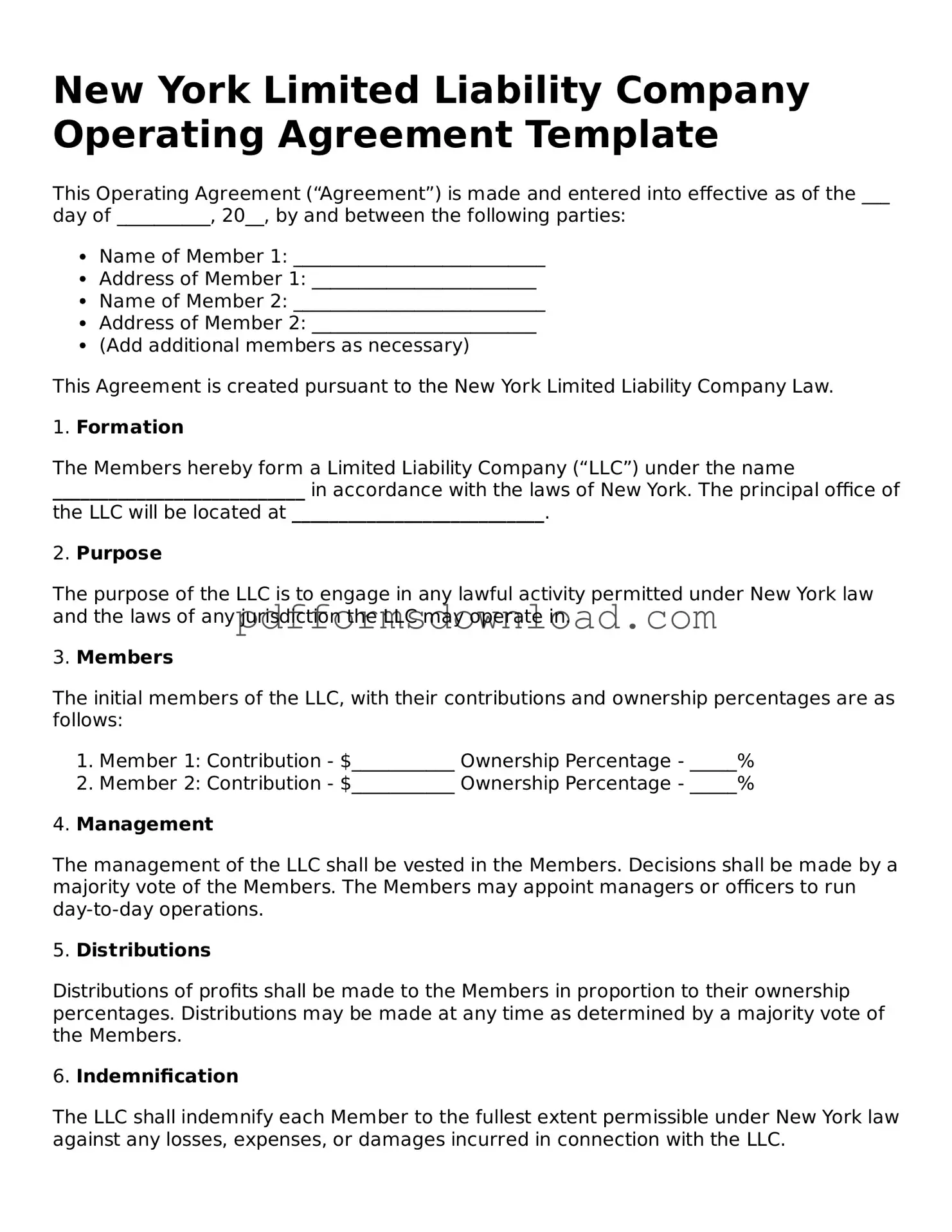What is an Operating Agreement in New York?
An Operating Agreement is a legal document that outlines the ownership and operating procedures of a Limited Liability Company (LLC) in New York. It serves as a blueprint for how the company will be run, detailing the roles of members, management structure, and distribution of profits and losses. While it is not required by law, having an Operating Agreement is highly recommended to prevent disputes and ensure clarity among members.
Do I need to file the Operating Agreement with the state?
No, you do not need to file the Operating Agreement with the New York state government. However, it is important to keep it on file with your business records. This document should be accessible to all members of the LLC and can be critical in resolving any internal disputes or clarifying responsibilities.
What should be included in the Operating Agreement?
The Operating Agreement should include several key elements. These typically cover the LLC's name, purpose, duration, and the details of each member's ownership interest. Additionally, it should outline the management structure, voting rights, procedures for adding or removing members, and how profits and losses will be distributed. Including provisions for handling disputes and the process for amending the agreement is also advisable.
Can I create my own Operating Agreement?
What happens if we do not have an Operating Agreement?
If your LLC does not have an Operating Agreement, New York's default rules will apply. These rules may not align with your intentions or the specific needs of your business. Without an agreement, members may face challenges in decision-making, profit distribution, and resolving disputes, leading to potential conflicts and misunderstandings.
How can we amend the Operating Agreement?
